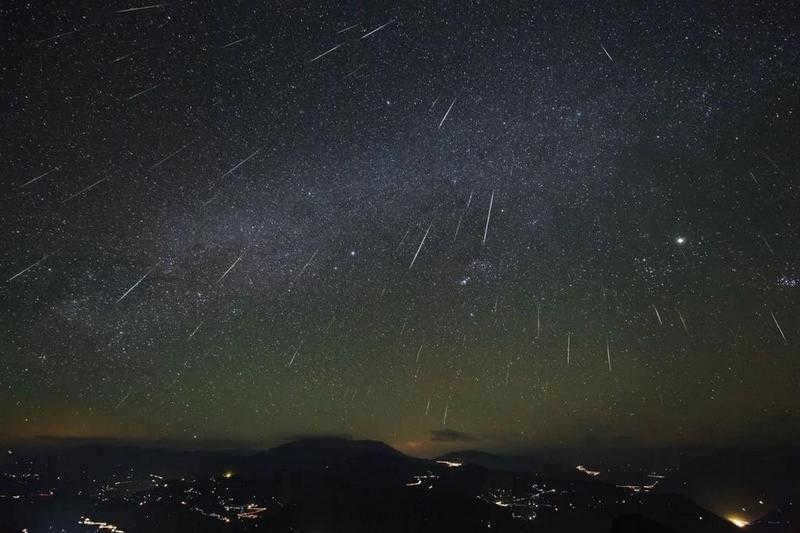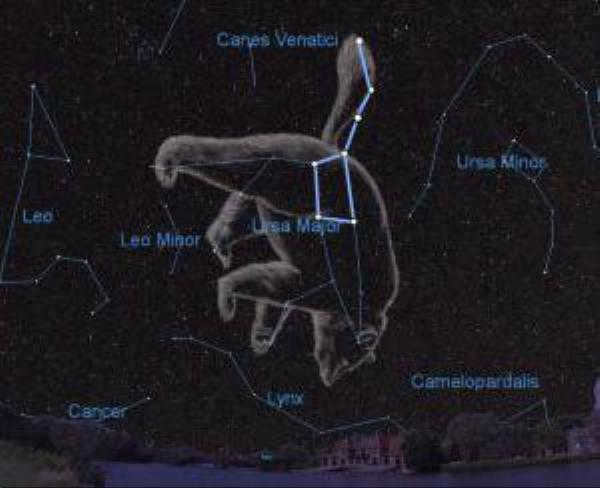
Undoubtedly, the Big Dipper is the most prominent and famous constellation, without a doubt. Specifically, it is not the entire Big Dipper, but rather a portion known as the Big Bucket, that is easily visible in the nocturnal sky. Upon closer inspection, one can also observe a few additional stars below and to the right, forming the bear’s paws and head. The configuration of this constellation is truly captivating. After all, it is rare to come across bears with tails of such remarkable length.
The most prominent part of the constellation
Everyone is familiar with the famous seven bright stars that make up the Big Dipper. These stars were given unusual names by Arab astronomers during the Middle Ages.
Although these stars appear to be evenly spaced from the ground, in reality, they are not. The seven bright stars in the Big Dipper are not equidistant from both the Earth and the Sun.
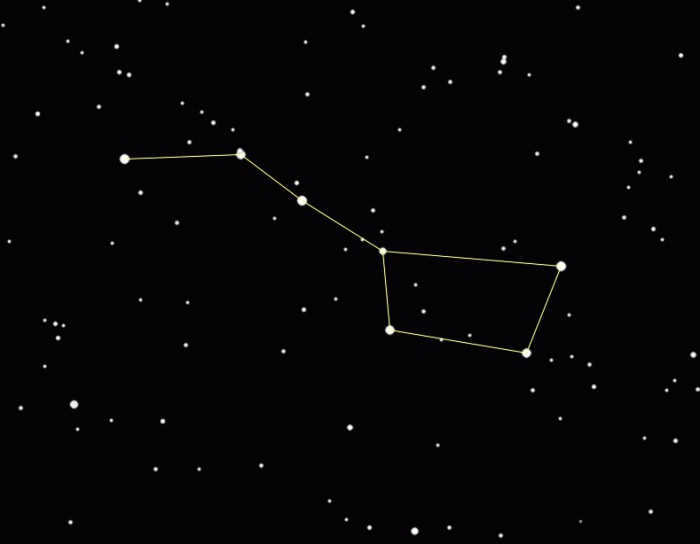
Benetnash is the nearest star to our planet, while Aliot is located sixty light years away. Interestingly, Aliot appears to be brighter than Benetnash despite its greater distance. Aliot stands out as the most radiant and dazzling celestial object within the Bucket. In terms of the apparent intensity of their emitted light, all the stars in this section of the Big Dipper are comparable to those of the second magnitude.
Fascinating tidbits
Upon close observation of Mitsara, one of the stars in the Bucket, a subtle flicker can be discerned adjacent to it. The reason behind this phenomenon is quite straightforward: Mitsar is not your run-of-the-mill star, but rather a binary star system.
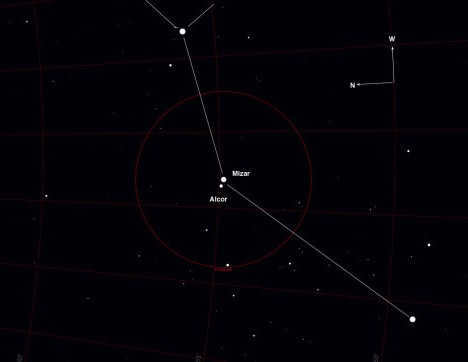
The celestial body adjacent to it goes by the name Alcor. These two terms have their origins in the Arabic language, signifying “horse” and “rider”. Alcor and Mizar represent one of the standout binary star systems visible from our planet.
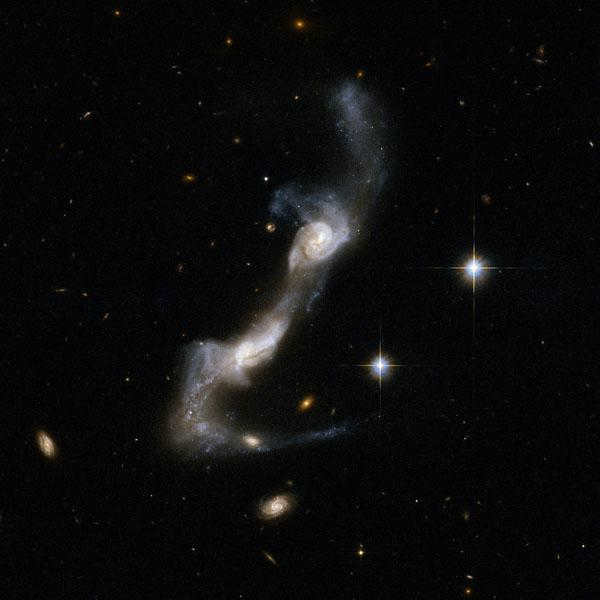
The Big Dipper’s bucket is home to seven bright stars. However, if you observe it with binoculars or a telescope, you’ll be able to spot two more faint patches of light. Unlike the stars, these patches appear hazy and unfocused. This is how distant galaxies appear from our vantage point on Earth. Two such galaxies within the confines of the Big Dipper are known as the Whirlpool and Pinwheel galaxies.
The Revolution of the Great Pail
It is a well-known fact that our planet Earth is constantly in motion. This constant movement gives the illusion that the stars in the sky are rotating. The Great Pail is no different in this regard. During the winter and fall seasons, the Big Dipper can be observed in the northern region of the night sky, relatively close to the horizon. However, during the spring and summer months, this prominent constellation can be seen nearly at its highest point, right above us. Interestingly, during this time of year, the Big Dipper appears to be inverted.
Cosmic Navigation
Therefore, the quantity of luminous stars within the container of the Big Dipper – precisely seven. A duo of them can function as a navigational landmark for individuals who are traveling. The reality is that locating the most renowned star on Earth – Polaris – is not a challenging task. It is just a matter of envisioning a line along the two outermost stars in the bowl of the Dipper. Subsequently, an estimation of the distance between them should be made. Polaris itself is situated nearly directly above the North Pole.

In ancient times, before the invention of navigational instruments, the Big Dipper served as a crucial landmark for sailors and explorers. If you ever find yourself in a challenging situation in an unfamiliar territory, simply look up at the Big Dipper constellation. By locating Polaris, the star that it points to, you can easily determine the direction towards the north. This modest and relatively dim celestial object has proven to be a guiding light for those who have found themselves lost in the wilderness, whether it be the taiga, the desert, or at sea. Polaris is the brightest star in the neighboring constellation known as the Little Dipper, and both constellations are commonly referred to as circumpolar due to their proximity to the North Pole.
What is the number of stars in the Big Dipper?
Undoubtedly, the Big Dipper constellation contains a significantly larger number of stars compared to its most prominent section – the Bucket. Currently, there is knowledge of approximately 125 stars within this constellation. These stars consist of over a hundred luminous objects, which would make the Sun appear small and faint in comparison. Unfortunately, the closest star to Earth is not detectable by the naked eye and lacks a specific name. According to astronomical classification, it is categorized as a 7.5 magnitude star. It takes approximately 8.25 years for the light from this star to reach Earth, which is nearly twice the duration of the closest star to us, Alpha Centauri. Hence, the answer to the inquiry regarding the number of stars in the Big Dipper is straightforward – more than a hundred, and not all of them are visible without the aid of a telescope or binoculars. To imagine a wild animal with a lengthy tail within the Bucket, one must possess quite a imaginative mind.
The story of the Great Bear constellation
Undoubtedly, when it comes to such prominent features of the nocturnal heavens like the stars comprising the constellation known as the Big Dipper, there are bound to be numerous myths and legends surrounding them. One of the most renowned tales involving this celestial formation was conceived by the ancient Greeks. Chroniclers from this ancient civilization recount the story of a king from Arcadia who had a remarkably beautiful daughter named Callisto. This young woman was so confident in her own allure that she dared to challenge Hera, the wife of Zeus, in a contest of attractiveness. Incensed by this audacity, the goddess sought retribution by transforming Callisto into a bear using her supernatural abilities. Callisto’s son, Arkas, happened to stumble upon a wild beast lurking near the entrance to the palace upon returning from a hunt. Initially intending to slay the creature, he was ultimately dissuaded by Zeus himself, who harbored an affection for the lovely Callisto. Following her rescue, Callisto was elevated to the celestial realm, where she became the stars that comprise the Big Dipper. Simultaneously, the supreme god also immortalized Callisto’s cherished canine companion, who is now known as the Little Bear.
The stars in the constellation of the Ursa Major, or rather in its Ursa Majoris, are the most prominent in the nighttime sky. However, aside from the Ursa Minor, there are several other well-known constellations in the vicinity. The same Polaris can serve as a point of reference for locating one of them. Behind it, on the opposite side of the Ursa Major, at roughly the same distance, lies Cassiopeia, known to many by its moniker. In appearance, this constellation resembles the Cyrillic letter “И”. In certain Earth positions, Cassiopeia “flips” and takes on the form of the Roman W.
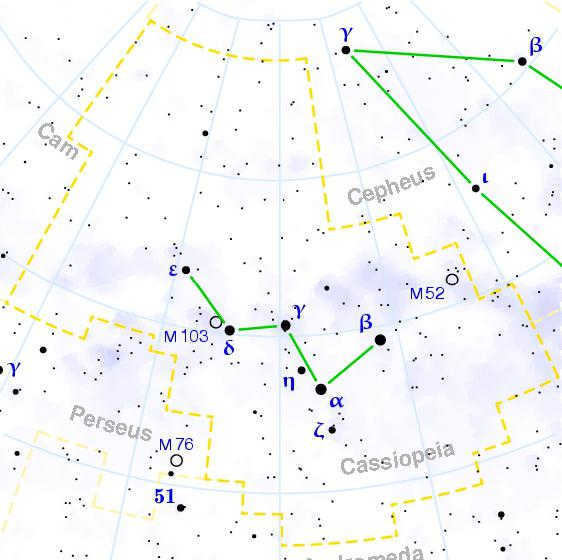
Between the Big Dipper and the Little Dipper, the constellation Cepheus can be observed. It is not as prominent as the others, but it is still recognizable. Cepheus does not have a distinct shape. In addition to Cepheus, the winding Dragon can also be easily spotted between the two dippers. The stars in the Dragon form a chain that can be easily traced on a map with a broken line.
So, we have hopefully answered the main question of this article, which is how many bright celestial objects are there in the Big Dipper. There are only seven stars in the constellation. However, the main constellation itself includes about 125 distant “suns”.
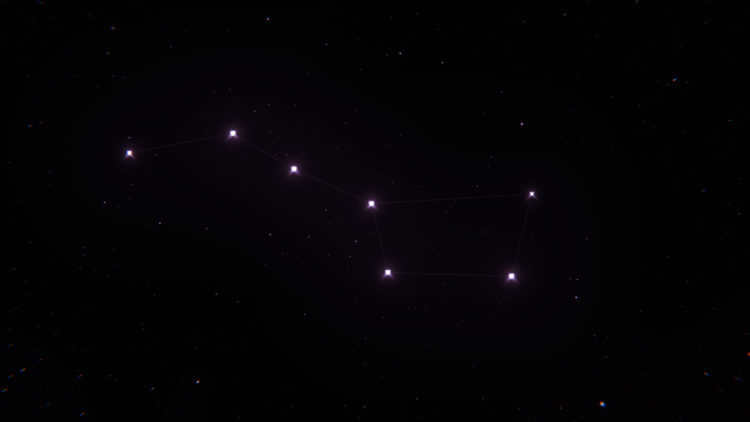
The Ursa Major constellation, also known as the Big Dipper, can be found in the northern hemisphere of the sky. Its seven stars create the shape of a bucket with a handle. The two brightest stars, Aliot and Dubhe, have a luminosity of 1.8 apparent sidereal magnitude. By connecting the two outermost stars (α and β), one can locate Polaris. The best visibility conditions for the Big Dipper are in March-April. It can be seen throughout Russia all year long, except for the autumn months in southern Russia when it descends close to the horizon.
Overview
Elaborate explanation

The constellation Big Dipper can be found in the northern hemisphere of the night sky. It has been known to humans for thousands of years. Ancient astronomers from Egypt, Babylon, China, and Greece were all familiar with it. Claudius Ptolemy included it in his book “Almagest” during the 2nd century. This book compiled all the astronomical knowledge of that time period.
The Big Bucket is made up of the following seven stars:
- Dubhe (Alpha of the Big Dipper), which gets its name from the Arabic phrase “the back of the big bear”.
- Merak (β) means “loins” or “groin” in Arabic.
- Fekda (γ) represents the “thigh”.
- Megrez (δ) is known as the “base of the tail” and is the least bright star among the stars in the constellation Ursa Major.
- Aliot (ε) is referred to as “curd” and is the most luminous star in this constellation.
- Mizar (ζ) derives from the Arabic word for “belt.” In close proximity to Mizar is another star called “Alcor.” Interestingly, the ability to distinguish between these two stars is a result of having good eyesight (with no more than 1 diopter of myopia).
- Benetnash (η), also known as Alkaid, is the third brightest star in the Big Dipper. “Al-kaid banat nash” translates from Arabic as “leader of the mourners.”
Within this scenario, we are faced with a trio of celestial bodies. The most prominent among them is a red giant, whose core has already depleted its hydrogen reserves, resulting in a surface-based thermonuclear reaction. This star is in the process of dying and will eventually transform into either a white dwarf or a black hole. The remaining two stars are classified as Main Sequence, similar to our very own Sun.
Aligned in a linear fashion with Dubhe, situated at the bottom of the bucket, is the luminous star known as Merak. It possesses a remarkable brilliance, shining 69 times brighter than the Sun; however, due to the vast expanse of cosmic space, its impact may not be fully appreciated. If you extend the straight path connecting Merak and Dubhe towards the constellation of the Little Bear, you will ultimately arrive at Polaris. This star resides at a distance that is five times greater than the span between the aforementioned celestial luminaries.
Thecda is the term used to describe the lowest point of the bucket at the other extreme. It is a star that belongs to the Main Sequence. On the opposite side of the dipper, there is Megrez, which is the dimmest star among them all. Megrez is approximately 1.5 times larger than our own sun and shines 14 times brighter.
In the beginning of the handle lies the star Aliot. This star is the most luminous in the constellation of the Big Dipper. Among all the stars visible in the sky, it holds the 33rd position in brightness. From the opposite end of the handle, the third brightest star is located, and the second brightest one is Mizar. Adjacent to it is another celestial body known as Alcor. It is visible to anyone with good eyesight. It is believed that in ancient times, Alcor was used to test the visual acuity of young boys who aspired to become sailors. If a young man could spot this star alongside Mitsar, he would be accepted as a sailor.
Actually, there are not just 2 stars in the vast expanse of the cosmos, but a total of 6. These include the double stars Mizar A and Mizar B, as well as the double star Alcor. However, when observed from Earth with the naked eye, we can only see a single bright point and its smaller companion. These unexpected celestial phenomena are just some of the surprises that the universe has in store.
And lastly, we have the outermost star known as Benetnash or Alkaid. These names are derived from the Arabic language, with a literal translation meaning “leader of the mourners”. Alkaid signifies “leader” while Banat our means “mourners”. This celestial body is the third brightest star, trailing behind Aliot and Dubhe. It holds the 35th position among the brightest stars in the night sky.
The most luminous stars in the constellation Ursa Major
Additional items in the constellation Ursa Major
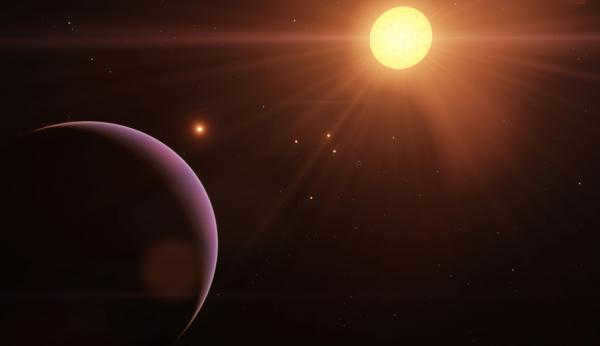
Aside from the constellation of the Big Dipper, there is also a group of stars known as the “Three Leaps of the Gazelle” that can be seen. This asterism resembles three sets of stars.
These sets of stars are:
- Alula North South (ν and ξ),
- Taniyah North and South (λ and μ),
- Talitha North and South (ι and κ).
In close proximity to Alupa North, there is a red dwarf star known as Laland 21185. This star is not easily visible to the naked eye, but it is the sixth nearest star system to the Sun. It is even closer than the stars Sirius A and B.
Astronomy enthusiasts know that this constellation includes the Helix galaxy, also known as M101, as well as the galaxies M81 and M82. These two galaxies are believed to be the closest group of galaxies, located approximately 7 million light-years away. In contrast, the celestial object M 97, commonly referred to as the “Owl,” is much closer, residing within the Milky Way. The “Owl” is a notable planetary nebula and is considered one of the largest.
In 2013 and 2016, astronomers made two significant discoveries in the constellation: z8 GND 5296 and GN-z11, two galaxies located at extreme distances. These galaxies emitted light that traveled for 13.02 (z8 GND 5296) and 13.4 (GN-z11) billion years before reaching our observation.
The constellation of the Big Dipper, known since ancient times, is not only famous for these distant galaxies but also for its abundance of other celestial objects. One such galaxy is Vertushka, also known as M 101. This galaxy is even larger than our own Milky Way. Detailed images of Vertushka were captured by the Hubble telescope in the early 2000s. To reach this massive star cluster, one would have to travel a distance of 8 million light years.
The Owl Nebula is an intriguing object in our galaxy, featuring two adjacent dark spots that resemble the eyes of an owl. Discovered in 1848 by Lord Ross, the nebula has since been named after its distinctive appearance. This cosmic formation is estimated to be around 6,000 years old and is located approximately 2300 light years away from our solar system.
However, perhaps even more captivating is the possibility of extraterrestrial intelligence originating from the constellation of the Big Dipper. Within this region of space lies a star known as 47UMa, a yellow dwarf with a planetary system resembling our own. Currently, three planets have been identified orbiting this celestial body. In an effort to make contact, a radio message was sent to 47UMa in 2003, as humanity continues its persistent quest for intelligent life beyond Earth’s boundaries.
What is the method for locating the constellation Ursa Major in the celestial sphere?
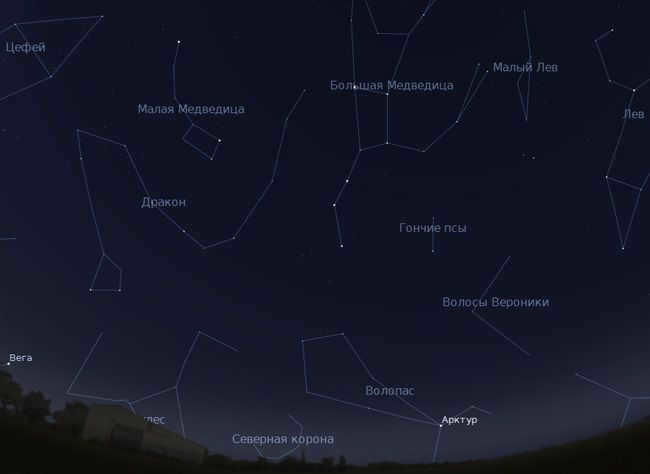
If you desire to acquire the skill of navigating through the celestial realm, your initial priority should be to locate the constellation known as Ursa Major, commonly referred to as the Big Dipper. Although it is not situated far from Polaris, it is not in such close proximity that it remains in the same position in the sky at all times.
The Big Dipper is most easily discernible during the autumn and winter seasons. During these periods in the evenings, this group of stars can be found in the northern region of the sky, not positioned high above the horizon as we are accustomed to.
As winter draws to a close, the position of the Big Dipper in the evening sky undergoes a transformation. The seven stars that make up the dipper gradually shift towards the east, causing the Big Dipper itself to stand upright on its handle.
During the evenings in mid-spring, the Big Dipper reaches its highest point in the sky, directly above you! At this particular time, it appears inverted in relation to Polaris. The dipper portion faces west while the handle points east.
For individuals residing north of Moscow, it becomes considerably challenging to locate the Big Dipper in the summertime, especially during the shorter nights. During this period, the constellation can be found in the western direction, with the dipper tilted downward and facing north.
How to locate Polaris using the Big Dipper?
Let’s now look at how we can locate Polaris using the Big Dipper. The process is quite simple. Identify the two outermost stars in the dipper, which are Dubhe and Merak (also known as the alpha and beta stars of the Big Dipper), and mentally connect them with a line. Then, extend that line by five times the distance between Merak and Dubhe.
You will then come across a star that shines with a brilliance comparable to the stars in the dipper. This particular star is known as Polaris, or the “iron nail” as it was called by the Kazakhs due to its unwavering position in the Earth’s sky.
By being aware of the whereabouts of Polaris, one can effortlessly navigate their way through space. Simply trace a vertical line downwards from Polaris. The point where it meets the horizon will indicate the direction of north. Locating the other cardinal directions is equally straightforward: east will be to the right, south will be behind you, and west will be to the left. This is the same principle that guided the construction of the Moscow-Yaroslavl and Moscow-Vladimir roads in Russia during the Middle Ages, which were known for their straight and arrow-like paths.
The Enigma of the Big Dipper: Varying Interpretations across Ancient Civilizations
Egyptian Mythology: The Celestial Symbol of the “Bull’s Thigh”
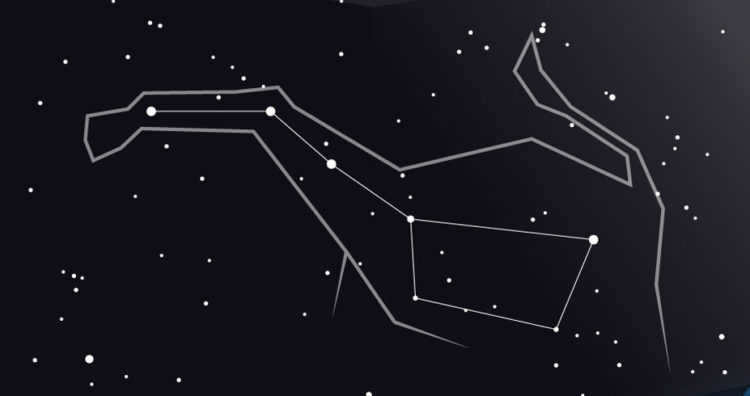
The Carriage of Emperor Shandi in China.
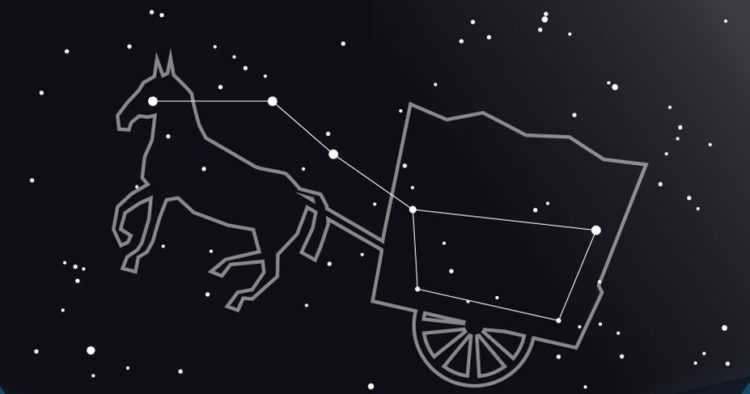
Ancient Chinese astronomers divided the sky into 28 vertical sectors known as “houses.” These houses represent the path that the Moon takes during its monthly journey. This is similar to how the Sun passes through the signs of the Zodiac in Western astrology, which was influenced by the Egyptians’ 12-sector division. In the center of the sky, like an emperor in the capital of a state, the Chinese had Polaris, which had already taken its rightful place. The seven brightest stars of the Big Dipper are located close to Polaris, within an area called the Purple Enclosure. This enclosure is one of three that surrounds the palace of the “royal” star. These stars can be described as the Northern Bucket, as they correspond to the seasons, or as part of the carriage of the Heavenly Emperor Shandi.
The Seven Wise Men of India
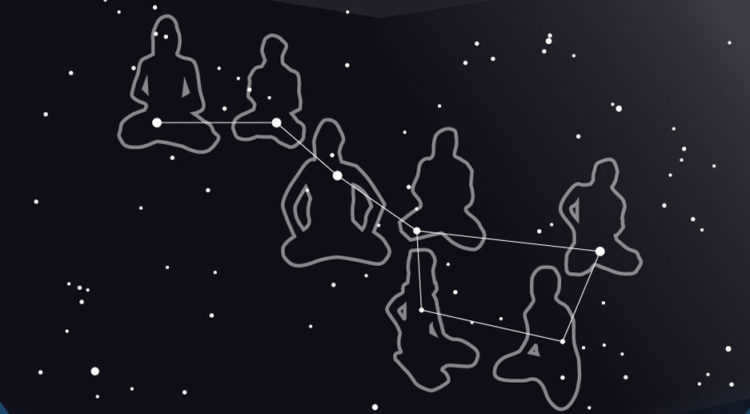
Ancient India’s observational astronomy did not reach the same level of brilliance as its mathematics. Its concepts were heavily influenced by both Greece and China. For instance, the 27-28 “stands” (nakshatras) that the Moon passes through in about a month bear resemblance to the Chinese lunar “houses”. Hindus also attributed significant significance to Polaris, which the Vedas experts believed to be the dwelling place of Vishnu himself. The Bucket asterism situated below it was regarded as Saptarisha – the seven sages who were born from Brahma’s mind and are the forefathers of our current era (Kali-yuga) and all living within it.
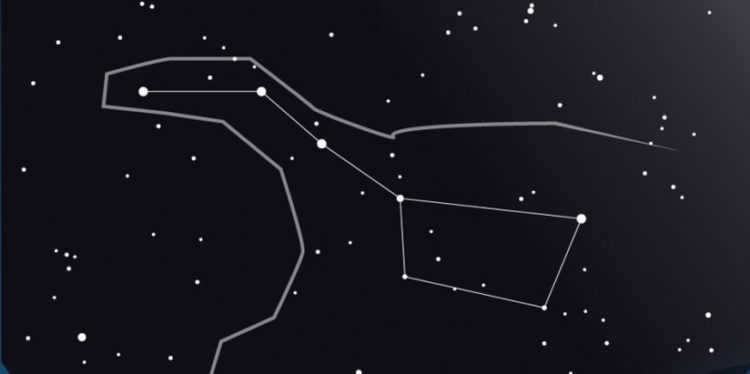
The Big Dipper is one of the 48 constellations mentioned in Ptolemy’s star catalog around 140 BC, although it is first referenced much earlier, as far back as Homer. Confusing Greek legends offer various explanations for its origin, although they all agree that the bear represents the beautiful Callisto, the companion of the goddess-hunter Artemis. According to one version, employing his usual tactics of reincarnation, the amorous Zeus seduced her, provoking the wrath of his wife Hera and Artemis herself. Saving his lover, the thunderer transformed her into a bear, who roamed the mountain forests for many years until her own son, fathered by Zeus, encountered her while hunting. The supreme deity had to intervene once again. Preventing a matricidal act, he brought them both to the heavens.
The Magnificent Bear of the United States
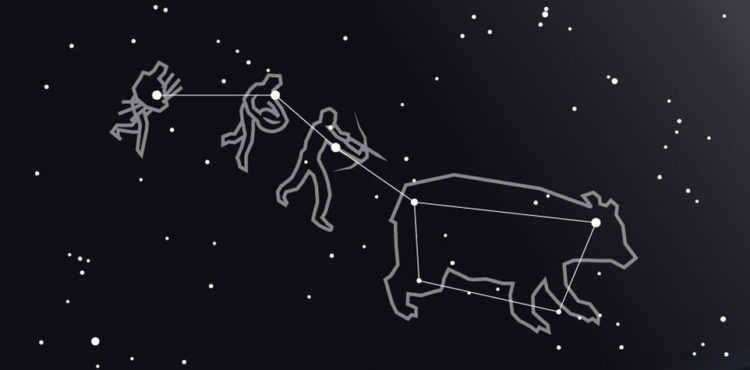
The Native Americans seemed to have an understanding of wild animals. According to the Iroquois legend, the constellation known as the “celestial bear” does not have a tail. Instead, it is depicted as three hunters chasing after the bear. Aliot is shown drawing a bow with an arrow already embedded in it, Mitzar is carrying a cauldron for cooking meat (Alkor), and Benetnash is carrying an armful of kindling to light the hearth. As the Bucket constellation sinks lower in the sky during autumn, the wounded bear drips blood, staining the trees with various colors.
Fun facts
- The nearest and brightest star in the Big Dipper– is South Alula or xi star of the Big Dipper. This stunning double star can be observed as two separate components when viewed through a telescope with a lens larger than 80mm. Both components have similar characteristics to the Sun and each has a companion, a cold red dwarf! The distance to ξ of the Big Dipper is 29 light years. A little further away is the star θ – 44 light years from the Sun. Lastly, the farthest from the brightest stars in the constellation is the red giant μ of the Big Dipper, which is located in the front “paw” of the Dipper. The distance to this star is 249 light years.
- The Big Dipper can also be observed during daylight hours. You can easily locate it on one of the interactive constellation maps. These maps also allow you to discover other larger and smaller constellations and examine them up close.
- It goes without saying that the expansive Big Dipper constellation is a true delight for any avid astronomy enthusiast! This region of the sky is home to numerous celestial wonders that can be viewed with small telescopes, including double and variable stars, several bright galaxies and numerous fainter galaxies, a dispersed star cluster, and even a planetary nebula. The descriptions of these objects are too extensive to fit within the confines of a single article, so we have decided to publish separate articles dedicated to observing the various wonders of the Big Dipper.
Engaging information about constellations. Fascinating details about the Big Dipper constellation.
As commonly acknowledged, the stars comprising the Big Dipper create a distinctive celestial bucket, known as an asterism, which consists of stars with a recognizable configuration and an established designation.
Currently, the Big Dipper constellation spans a significantly larger region than it did in ancient eras, when individuals only identified seven luminous celestial bodies.
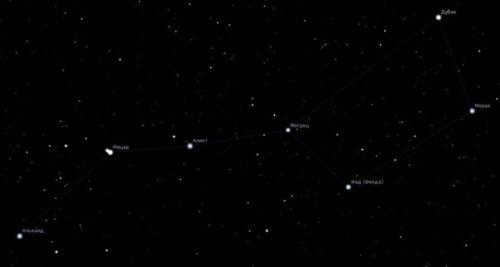
The stars that make up the dipper are known as Dubhe (the alpha star of the Great Bear), Merak, Fekda, Megretz, Aliot, Mitsar, and Benetnash. These names have Arabic origins, while their designations are Greek. On average, these stars are located about 120 light-years away from Earth. While they may not be the brightest stars in the sky, with an average stellar magnitude close to 2m, they are still easily visible to the naked eye. In fact, on a clear, dark, moonless night in a remote area far from city lights, it is possible to see up to 125 stars without the aid of any telescopes or binoculars.
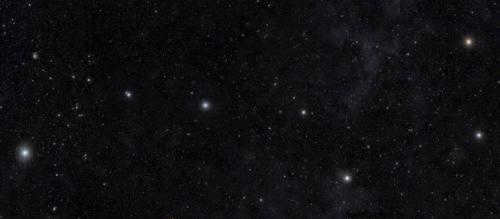

Mitsar and Alcor, two prominent stars.
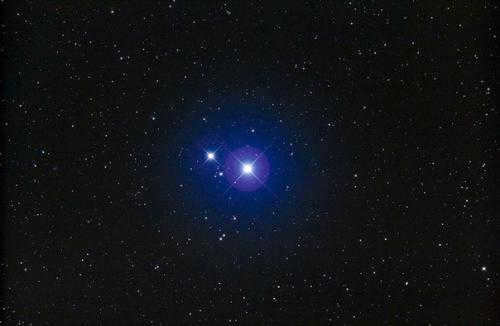
The second star located near the “Handle” of the mizar bucket is also a visible double star that can be used to test one’s eyesight. This fainter star is known as alcor.
It is important to note that a new study in 2009 discovered that mizar and alcor actually form a sixfold system, with the double stars mizar a and c orbiting around the double star alcor. It is not surprising that they are often found in pairs and clusters.
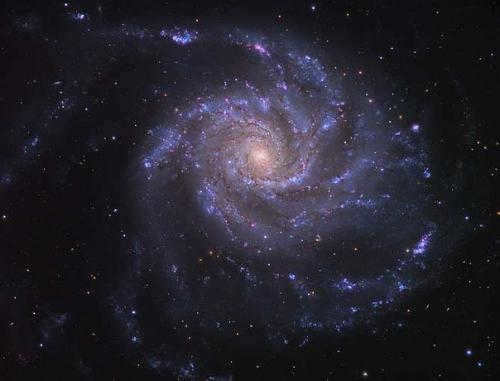
There are other fascinating entities.
Enthusiasts of observational astronomy know very well that this collection of stars is the residence of the spiral galaxy M101 (nicknamed the fidget spinner), as well as the galaxies M81 and M82.
Researchers from the University of Texas have identified two exoplanets revolving around the bright star 47 of the Big Dipper. Therefore, for those passionate about astronomy, this constellation holds significant appeal. Source: Spacegid. com.
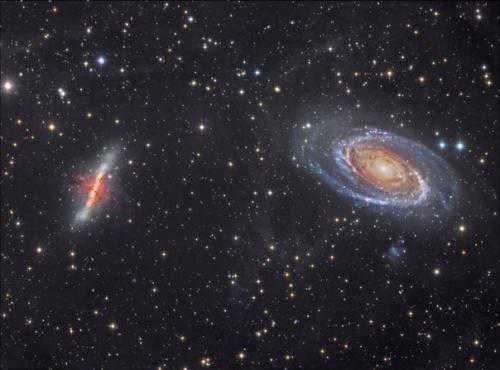

Engaging details about the Big Dipper constellation. 14 intriguing facts about the Big Dipper
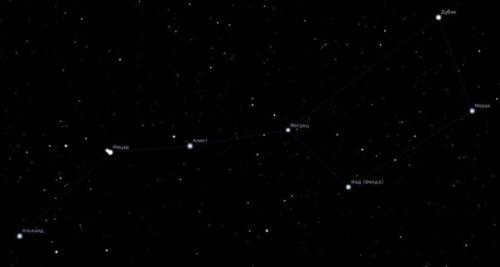
As promised, the Big Dipper is the most well-known constellation that can be easily spotted in the night sky. It is believed that even people in the Neolithic era were able to recognize this group of seven stars. However, contrary to popular belief, the Big Dipper actually contains more than just seven stars. In his work “Catasterisms” from the 3rd century BC, Eratosthenes counted a total of 24 stars in the constellation (as noted by Hyginus in the 2nd century AD: “Subsequently…)
According to some astronomers, it has been determined that a group of twenty-five stars includes only seven stars, which means that the image of the bear does not consist of just seven stars. In his work “Almagest” (I century AD), Ptolemy stated that there are 35 stars in the constellation, while the Yale catalog of bright stars suggests that there are actually more than 200 stars that can be seen with the naked eye in ideal conditions.
The Big Dipper, although it appears small and spectacular, is actually a much larger part of the constellation. In fact, it is about ten times bigger in size! In terms of area, the Big Dipper ranks third among all the constellations in the sky, surpassing Hydra and Virgo. Its space is so vast that it could accommodate more than 4000 disks of the Moon if packed in the densest hexagonal arrangement.
These constellations are known as “non-setting circumpolar constellations,” and the Big Dipper is one of them (according to Homer, the only one) and the most stunning. (Of course, “non-sunrise” is a relative term, only applicable in the middle and high latitudes of the northern hemisphere, where the majority of the world’s population resides.)4.
For instance, in Moscow, the Big Dipper passes directly through the zenith, typically around midnight in early April.5. The unique aspect of its position – always in the north (although not precisely) – and the constellation’s constant visibility have captivated navigators since ancient times: the Big Dipper has always served as the celestial compass for ancient shipbuilders.
The Greeks attributed the discovery of navigation on the Big Dipper to Navplius, the mythological son of Poseidon and the navigator of the Argonauts. Ever since, the Greeks have sailed “on the Big Dipper” (although the more advanced Phoenician navigators used the Little Dipper, which more accurately points north).
However (and this is well known!), the Big Dipper can help in finding the exact direction to the north: all you need to do is extend the line connecting the two outer stars of the “dipper”, and it will lead you to Polaris. These stars are known as “pointers”. And these are not the only pointers of the Big Dipper.
The Greeks were familiar with the constellation called “Helika” (meaning “Shell”, resembling the twisted shape of a Ladle), “Arktos” (which means Medveditsa in Russian) and the Carriage. In ancient Mesapotamia, it was also known as the Carriage, but the ancient Arabs saw it as the Funeral Carriage consisting of four stars and three Mourners with a leader leading it.
All of these names in some way or another reference the arrangement of the seven main stars in the constellation. These types of constellations are sometimes referred to as “natural” constellations. The stars in the sky are commonly identified using Greek letters, with the brightest star being labeled as alpha, followed by beta, and so on in descending order of brightness.
Actually, the Bayerian designations do not precisely correspond to the luminosity of the celestial bodies: Bayer merely divided the stars into six categories “based on stellar magnitude”, and the stars within each category were consecutively assigned labels according to various criteria, occasionally from west to east, other times from north to south, and most frequently, “based on their position within the constellation’s figure”.
He counted and labeled the seven brightest stars of the Bucket in order “from the bucket to the handle”.9 The second star from the end of the handle is marked with a small asterisk: this pair is Mizar and Alcor. According to some ancient popular books, “Mitsar” and “Alkor” are said to mean “horse and rider”; however, this translation is incorrect: Mitsar means “belt” (and originally “middle” on the tail), while Alkor means “insignificant”.
Another myth about this pair of stars states that only those who could distinguish these stars were recruited into the Pharaoh’s / Emperor’s guard / archers / hunters, etc. In reality, it is possible to distinguish these two stars with average eyesight.10.
Actually, when looking through a telescope, Mizar can be easily separated into two stars, Mizar A and Mizar B, which means that Mizar is a physical binary system. Additionally, Alcor is also a binary star, and each component of Mizar A and Mizar B is also a binary system. Therefore, both Mizar and Alcor are actually sextuple stars.
The closeness of stars in the sky does not always indicate their proximity in space, but Mizar and Alcor are an exception to this. In fact, five out of the seven stars in the Big Dipper (along with many smaller ones) belong to a larger group of stars called the “Big Dipper Major Group,” even though there are a number of other stars outside of the constellation that are included in this group as well.
This cluster of stars is so expansive and interconnected, originating from a shared source: all of these stars were created from a singular protostellar cloud and now, still retaining their initial momentum, they persist as a unified stellar stream moving in a similar direction, gradually dispersing throughout space.
Fascinating information about constellations for kids. Intriguing facts about star patterns
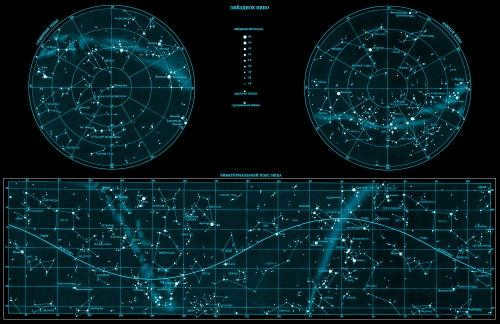
There are a total of 88 star patterns that can be observed in the night sky. These patterns are known as constellations.
When the earliest astronomers in Babylon, Egypt, China, and Greece began studying the stars in ancient times, they noticed groups that were formed by the stars. They assigned names to these constellations based on mythical heroes and creatures, such as Taurus (the bull) or Perseus (the Greek hero). Constellations that were discovered later were given different names, like Telescopium (the telescope).
The stars that make up the pattern of a constellation are situated at varying distances from Earth. Within a constellation, not only can stars be observed, but also nearby objects within the solar system and far-off galaxies – all of which, at the moment of observation, are considered part of that particular constellation.
Distinct constellations are visible in different hemispheres of our planet. Around the year 150, the ancient Greek scientist Ptolemy compiled a catalog of 48 constellations. Only when European astronomers ventured to the northern hemisphere and observed stars that were invisible to those residing in the southern hemisphere were new names added to this catalog.
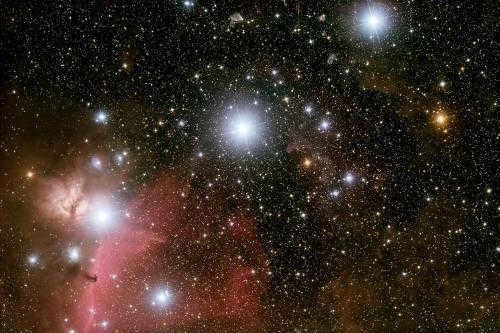
Orion’s Belt is the designation for the trio of the brightest stars in the constellation Orion. The constellation Orion can be observed from any location on the planet. Not all constellations are readily visible. The Southern Cross is the smallest constellation, yet it is highly noticeable due to the stars’ luminosity.
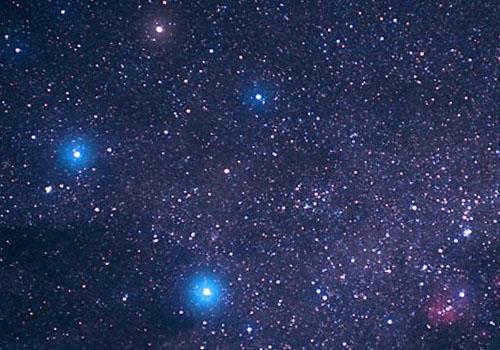 Hydra is the largest constellation, but it is very faint, making it almost imperceptible.
Hydra is the largest constellation, but it is very faint, making it almost imperceptible. 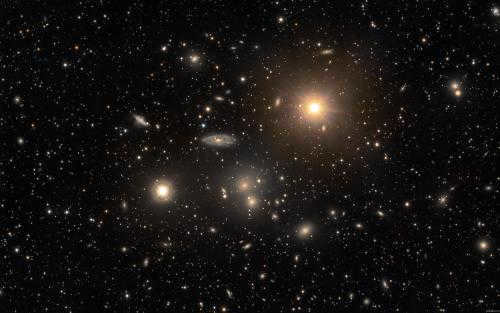
Unique information about the constellation Hydra. Story behind the constellation Hydra
Hydra is an astronomical formation located in the southern hemisphere. It holds the distinction of being the most expansive constellation visible in the night sky. The name of this cluster derives from the Latin term “water snake,” owing to its striking resemblance to a curving serpent. The discovery of Hydra is credited to the renowned Greek astronomer Ptolemy, who first observed it during the 2nd century. In Japan, this constellation is referred to as Nuriko, while in China, it is recognized as Liu or Willow.
In Greek mythology, Hydra is linked to the aquatic serpent that Apollo’s raven (symbolized by the constellation Raven) presented to the deity as a means of apologizing for its tardiness in retrieving water. Apollo was incensed by the deceit and cast the bird, vessel, and water snake into the heavens, transforming them into the constellations Raven, Crater, and Hydra, respectively. Hydra is also connected to the Lernaean Hydra, a marine creature with seven heads, which was vanquished by Hercules as part of his twelve labors.
Curious information about the Swan constellation. The story of the Swan constellation
Swan (derived from the Latin word “Swan”) is one of the most renowned constellations in the northern hemisphere. The Swan constellation was initially documented by the Greek astronomer Ptolemy during the 2nd century AD. This constellation resembles a bird with a long neck and wide-spread wings.
The Swan constellation is connected to various myths. Orpheus, the talented musician and poet, was metamorphosed into a swan following his murder by the Maenads. He was then placed in the sky alongside Lyra, depicted as the Lyra constellation. In another legend, Zeus disguised himself as a swan to seduce Leda, the spouse of Tyndareus, the king of Sparta. As a result of their union, Leda gave birth to Castor, Pollux, Clytemnestra, and Helen of Troy.
Did you know these fascinating facts about constellations for students?
In ancient times, constellations were thought to be specific shapes formed by groups of stars. However, today they are defined as specific areas of the sky with designated boundaries that include all the celestial bodies within their limits. Back in 1930, the number of recognized constellations was officially set at 88. It’s interesting to note that 47 of these constellations were identified and described even before our era. Despite the passage of time, many of the ancient names and titles given to these stellar figures are still in use today.
Extensive research into the southern hemisphere of the sky commenced during the era of the Great Geographical Discoveries. However, it is important to note that the northern hemisphere was not overlooked. By the late seventeenth century, atlases depicting the celestial sky included descriptions of 22 newly discovered constellations. Notable additions to the map of the southern hemisphere included the Triangle, Indian, and Bird of Paradise, while the northern hemisphere featured the Giraffe, Shield, Sextant, and other prominent figures. Further celestial formations were identified near the South Pole, often named after various instruments such as the Clock, Pump, Telescope, Compass, and Circulus.
In Claudius Ptolemy’s list, which dates back to the 2nd century BC, there are a total of 48 constellations. Remarkably, 47 of these constellations have managed to survive to the present day. The one constellation that has been lost is known as the Ship or Argo, representing the ship of the renowned hero Jason from ancient Greek mythology, who embarked on a quest to obtain the Golden Fleece. However, in the 18th century, the Ship constellation was divided into four smaller figures, namely the Stern, Keel, Sail, and Compass. It is interesting to note that in ancient star charts, the Compass was originally depicted as the mast of the ship.
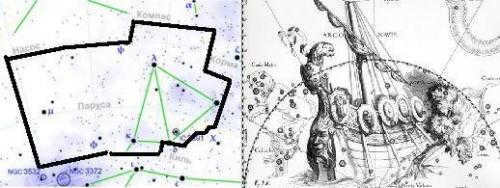
It may seem that stars are fixed in the sky, but in reality, they are constantly moving. However, due to their immense distance from us, we can’t perceive these movements with the naked eye. Only with the help of specialized instruments can we detect the subtle changes in their positions relative to each other. If we had the ability to observe the constellations over a span of at least 26 thousand years, we would be able to witness their gradual shift.
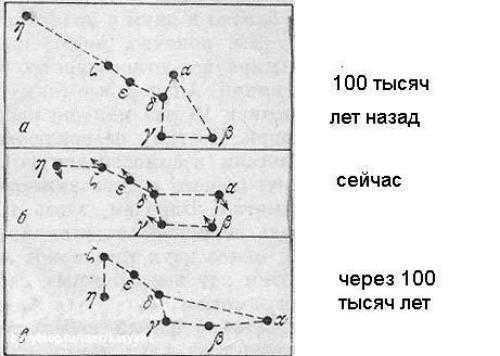
Typically, there are 12 zodiac signs – this division originated over 4.5 thousand years ago in ancient Egypt. Currently, astronomers have determined that from November 27 to December 17, another zodiac constellation, the Serpentine, appears on the horizon.
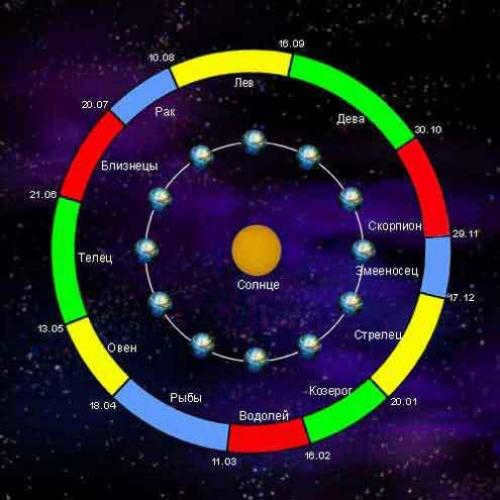
Hydra is known as the largest constellation in the night sky, covering approximately 3.16% of the celestial sphere. It extends in a long strip across a quarter of the sky and can be observed from both the northern and southern hemispheres.
The Southern Cross is the brightest constellation in the southern sky and is also the smallest of all the constellations. Its four stars have been used by sailors for navigation for thousands of years. The Romans referred to them as the “Throne of the Emperor,” but it was officially recognized as a separate constellation in 1589.
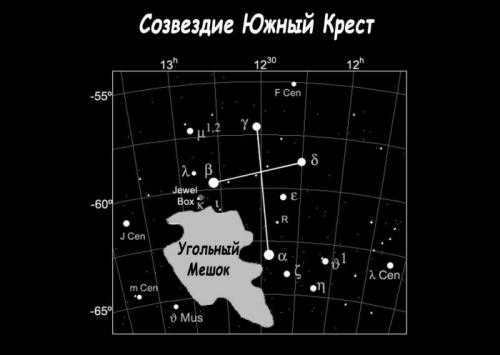
From ancient times in Russia, the distinct formation of stars known as the Big Dipper has been connected with the horse. In earlier times, it was referred to as the “Horse on a peg,” and the Little Dipper was not recognized as a separate constellation – its stars created a “rope” that tethered the horse to Polaris – the peg.
Curious details about the Leo constellation. Astronomical depiction
Starting with the modern characteristics of the Leo constellation, let’s deviate from strict chronology. Alongside Cancer and Virgo, Leo is also neighbors with star families known as Cup, Sextant, Little Leo, Hydra, Veronica’s Hair, and Big Dipper.
.
Spanning an area of 497 square degrees, the cosmic “estate” of Leo is said to contain anywhere from 70 to 122 stars visible to the naked eye, depending on the source. The head and chest of the king of beasts are formed by the asterism known as Sickle, named so due to its resemblance to an ancient agricultural tool. It should be noted that the sickle is a mirror image of a question mark. The Sickle asterism consists of six stars: Regulus, the double system Algiebu, and the triple system Algenubi.
Please note that Regulus is one of the most brilliant stars in the sky. Its name originates from Latin and translates to “tsarek”. However, the Arabs have a different interpretation and refer to it as the Heart of the Lion (Qalb Al-Asad). Regulus is approximately three times larger than our Sun and has a surface temperature of 14,000 Kelvin. Its luminosity is also a hundred times greater than that of the Sun. In conjunction with Arcturus and Spica, Regulus forms what is known as the “spring triangle”. This celestial formation can be observed in both the northern and southern hemispheres during the spring season.
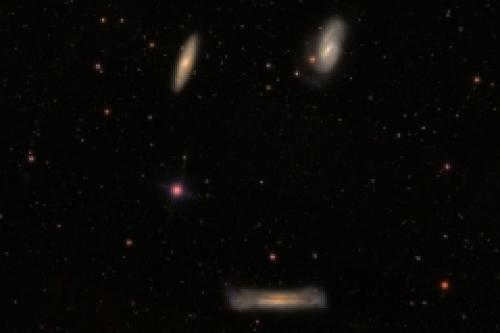
The mighty beast is depicted by a constellation of stars. Hence, Algieba can be seen as either the forehead or the mane, Hort as a small rib, Chertan as two small ribs, Tsoksa as a thigh, Zosma as a belt representing the loins, and Denebola as the lion’s tail.
An intriguing celestial object is the Lion Triplet, comprising of three spiral galaxies – M65, M66, and NGC 3628. Upon observing its image, one can notice a striking resemblance to a comical face.
And, naturally, we cannot overlook the Leonid meteor shower, which is particularly visible from November 15 to 19. During the peak of this period, on November 17, around 10 meteors are observed per hour. Additionally, every 32 – 34 years, there are spectacular meteor showers, with the first one being documented in 1799, where around thirty thousand meteors were recorded. In 1966, there were a staggering 144 thousand meteors. However, at the end of the twentieth century, in 1999, the intensity of the meteor shower decreased.
Curious details about the constellation Orion. Orion, the constellation
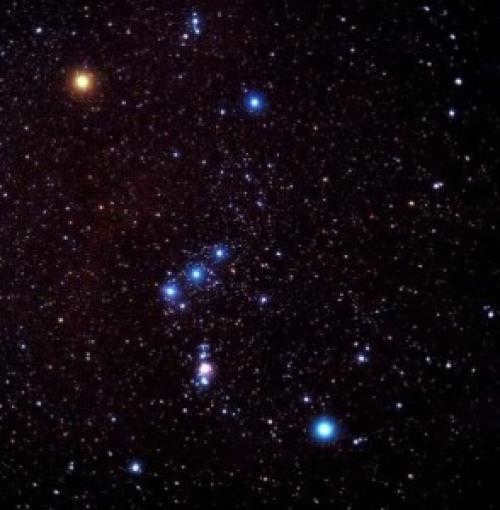
The ancient maps of the starry sky depict the constellation Orion as a hunter who is wielding a club and shield while engaging with Taurus. The origins of this hunter image can be traced back to the myths of the ancient Greeks.
According to one version of the myth, Orion, who was the son of Poseidon, encountered the goddess Artemis while she was naked. As a punishment for his actions, Artemis transformed Orion into a deer, and he was subsequently attacked by his own dogs. Poseidon then immortalized Orion, his son, and the dogs by turning them into constellations and placing them in the sky. Thus, Orion is forever accompanied by the constellations of the Big Dog and the Little Dog.
Curious details about the constellation Cancer. 10 extraordinary facts about the Zodiac Sign Cancer

Each Zodiac Sign has its own unique and fascinating qualities, and Cancers are no exception. Here, we will share with you the 10 most intriguing traits of individuals born under the influence of this constellation.
Individuals born under the Zodiac sign of Cancer are often considered the most enigmatic by astrologers. The Cancer constellation reigns over a time period that extends from June 21 to July 22. Descriptions of Cancer individuals often vary and contradict each other, as they are sometimes attributed with opposing characteristics. What makes them so mysterious, and what significant insights have astrologers reached in recent times?
To gain insight into the individuals born under the sign of Cancer, it is crucial to comprehend the driving forces behind their behavior. Their characteristics are determined by the ruling planet, the element associated with their zodiac sign, and the specific positioning of celestial bodies in their birth chart. For Cancer, the key factors are as follows:
Ruling planet: Moon
Exalted planet: Jupiter
Element: Water
To gain a more comprehensive understanding of the personality traits of Cancer individuals, it is essential to explore the qualities bestowed upon people by the Moon, which governs this constellation.

Ancient Greek mythology has associated the moon with multiple goddesses. This connection is derived from the ever-changing reflection of our satellite in the sky. The goddesses who embody the moon include:
- Artemis (Diana) – In mythology, she is known as a chaste hunter.
- Hera (Juno) – She is the wife of Zeus (Jupiter), the god of thunder, and is responsible for the home and is the protector of families.
- Hecate (Trivia) – an enigmatic deity who was often depicted with the spirits of the deceased. She was connected to illusions, trickery, enigma, and had the ability to bestow wisdom.
Unsurprisingly, given Cancer’s intricate astrological patron, deciphering its character can be challenging. However, we can attempt to provide a rough description by considering the Moon’s influence on individuals.
Unusual information about celestial bodies – stars
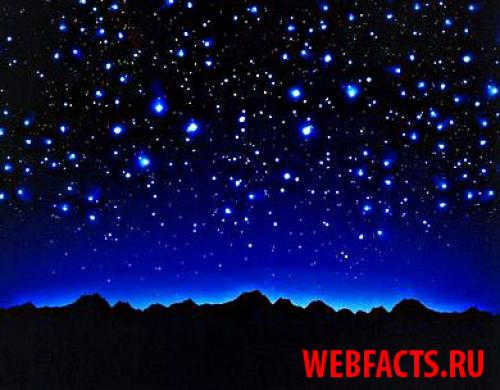
Have you ever pondered the vast number of stars that populate the night sky? It’s an impossible feat to calculate. But really, why would we want to? The mere act of gazing upon the night sky is enough to uplift our spirits. In this article, we’ve compiled some fascinating information about stars – not the glamorous celebrities, mind you, but the celestial bodies that adorn our universe.
1. If you believe that the sun is the most colossal star, then you are sorely mistaken. Astronomers have actually discovered a star that is over 100 times more massive than our sun. One example of such a star is Kiel’s star, which is situated a staggering 8,000 light-years away from Earth.
2. When stars cool and die, they are referred to as white dwarfs. Despite their diminutive size, these celestial remnants possess a density equivalent to that of a living star, not to mention their radius never exceeds that of our own planet.
3. Black holes are formed from very large stars, making them distinct from white dwarfs, which are also remnants of stars.
4. Proxima Centauri, located 4.24 light years away from us, is the closest star to Earth (excluding the Sun, of course). The Sun, on the other hand, is only 8.5 light minutes away.
In 1977, an autonomous probe was launched at a speed of 17 km/s, making it the fastest at the time. By April 2014, it had traveled a distance of less than 0.3 light years. Therefore, even within a human lifetime, reaching the nearest star to us would be impossible.
5. The composition of all stars is primarily hydrogen and helium, with approximately three-quarters hydrogen and one-quarter helium, along with small amounts of other elements.
7. The number of stars in our Galaxy (Milky Way) alone is in the hundreds of billions. However, there are also hundreds of billions of other galaxies where the number of stars is equally vast. Therefore, it is almost impossible to calculate the exact (or even approximate) number.
8. Approximately 50 new stars appear in our Galaxy every year.
9. A majority of the stars in the sky are actually double, consisting of two celestial bodies that are attracted to each other. The well-known Polanyi star is a triple star in fact.
10. Unlike most other stars, Polaris remains relatively fixed in its position, which is why it is referred to as a guiding star.
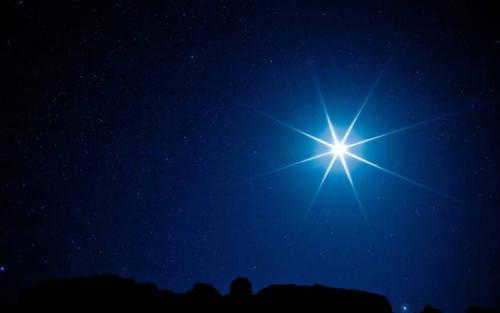
11. Due to the vast distances between stars and us, we perceive them as they appeared in the past. For instance, the sun is approximately 8.5 light minutes away from us, so when we observe the sun, we are actually seeing it as it appeared 8.5 minutes ago. Similarly, if we look at Proxima Centauri, we are viewing it as it existed 4.24 years ago. This calculation implies that many of the stars we observe in the sky may not exist anymore, as we perceive them in a state that occurred 1000-2000-5000 years ago.
Ursa Minor, also known as UMi, is situated in the near-polar region and remains visible throughout the year in the northern hemisphere. Its stars are arranged in a configuration that resembles a “dipper,” similar to the Big Dipper, but with a distinctively curved “handle.”
Located in the northern sky, the constellation known as the Little Dipper features Polaris as its final star, which remains fixed in position. The degree of Polaris’ elevation above the horizon corresponds to the latitude of the observer’s location. Consequently, Polaris not only serves as a guide to the north, but also provides a precise means of determining one’s coordinates. This unique characteristic was recognized and exploited by the Phoenicians, affording them a significant advantage in maritime navigation for over a millennium.
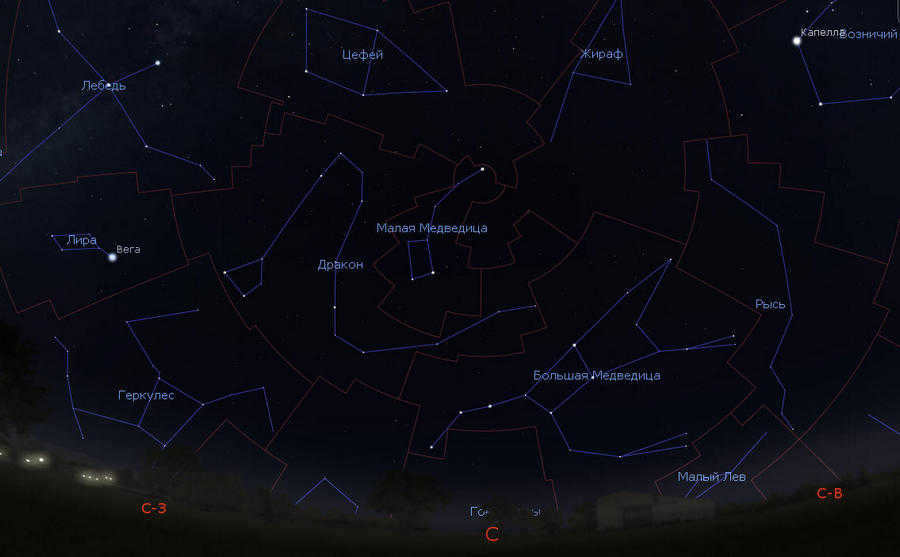

The Ursa Minor constellation in the night sky. Position on January 1st.
The remaining stars of Ursa Minor can change their position throughout the year or day, appearing to rotate counterclockwise around Polaris. Interestingly, this constellation is visible all year round in the northern hemisphere and can be observed on clear nights in Russia, as it never dips below the horizon.
Adjacent to Ursa Minor is a much larger and more prominent constellation, the Big Dipper. To locate Polaris, one can simply draw a line through the two outermost stars of the Big Dipper’s “bucket.” This method is well-known and easily teachable, even to children.
Ranking 56th in terms of size among all constellations, the Little Bear covers only 256 square degrees in the night sky.
The Myth of the Little Bear Constellation
There are numerous legends surrounding the Little Bear constellation, each with its own unique story. One such myth is connected to the birth of Zeus, the powerful and formidable god of Ancient Greece. Zeus’s father, Cronus, had a habit of devouring his own children, as it was foretold that one of them would overthrow him. To protect Zeus, his mother Rhea took him to a sacred cave atop Mount Ida. There, the nymphs Melissa and Kinosura cared for and raised him. Kinosura became Zeus’s nurse. When Zeus grew into a mighty god, he immortalized Melissa as the Big Dipper and Kinosura as the Little Dipper, both shining brightly in the night sky.
This myth also has various versions. For instance, one variation states that Zeus was nurtured by a goat named Amalthea and two actual bears, which later transformed into constellations.
There is another story linked to the constellation Ursa Minor. In the kingdom of Arcadia, King Lycaon reigned, and he had a stunning daughter named Callisto. Her beauty was so extraordinary that even Hera, Zeus’ wife, became envious. Since Hera possessed great power, she transformed Callisto into a hideous bear.
One day, Callisto’s son Arcadus was hunting in the forest and nearly killed a bear that crossed his path – little did he know that it was his own mother. Fortunately, Zeus intervened just in time and diverted the arrow. As a result, he placed Callisto in the sky as the Big Dipper constellation and her beloved dog as the Little Dipper constellation. Arcadus himself became the Volopassus constellation – its primary star, Arcturus, symbolizes the “protector of the Bear.”
Incidentally, Hera had a good reason to be jealous – Arcadus was the son of Zeus, who had a reputation for pursuing beautiful women, such as Callisto, whom he seduced.
Every culture has its own unique mythology surrounding the constellations known as the Big and Little Dippers. The Big Dipper is easily visible in the night sky, while the Little Dipper has the interesting characteristic of revolving around the North Star, Polaris. Interestingly, the Kazakh people believed that Polaris was a nail, and the constellation itself was a harness tied to it, worn around the neck of the Horse (representing the Big Dipper). In India, the Little Dipper was thought to resemble a monkey hanging from its tail, clinging to the pole of the world.
Stars in the Ursa Minor Constellation
The group of stars known as Ursa Minor is made up of seven individual stars:
- α – Polaris.
- δ – Yildun
- ε – Urodelus.
- ζ – Alifa al Farqadin.
- η – Anwar or Allaso
- β – Kohab
- γ – Ferkad
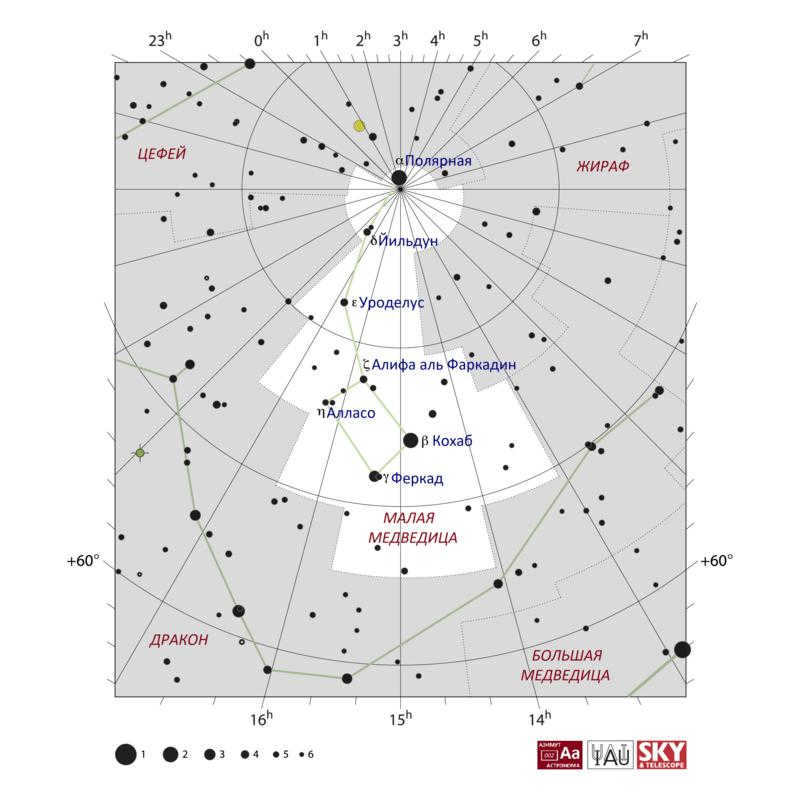
Illustration depicting the arrangement of stars in the Little Bear constellation. Source: Wikipedia.
The outermost stars, Cohab and Ferkad, are commonly known as the “Guardians of the Pole”. There are a few intriguing stars within this constellation, so let’s examine each one in sequence.
Polaris: The Lead Star of Ursa Minor
When you look up at the sky, Polaris may seem like an ordinary, unremarkable star with a brightness of 1.97 magnitudes. There are numerous stars that appear similar, and if it weren’t for its proximity to the celestial pole, it would likely go unnoticed. However, upon closer inspection, Polaris holds some intriguing surprises.
The distance to Polaris is quite remarkable – approximately 447 light-years away – making it an exceedingly distant destination for human travel. Yet, if we were able to embark on a journey to this star, we would be astounded to discover that it is actually a triple star system!
Even from our vantage point on Earth, we can observe the binary nature of Polaris through a telescope. At the core of the Polaris system lies a supergiant star that surpasses our Sun in size by about 50 times, weight by 6.5 times, and brightness by 2000 times.
At a distance of 2400 astronomical units, there exists a rather ordinary star. With a mass only 1.39 times that of the Sun, it can be easily observed from Earth, even with a small telescope, as a star with a magnitude of 9. This star completes a full orbit in a span of 100,000 years.
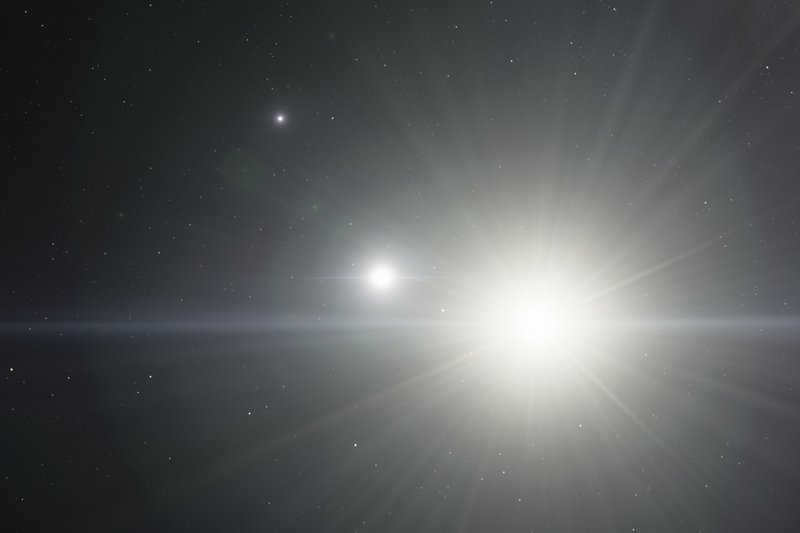
Discovered by William Herschel in 1779, this star appears yellowish white but appears greenish when viewed through a telescope due to an optical illusion. So, take a moment to admire this stunning celestial pair.
Located in close proximity to the central supergiant, the third component of this system is 1.26 times the mass of the Sun and completes a revolution every 30 years. It is referred to as Polaris B.
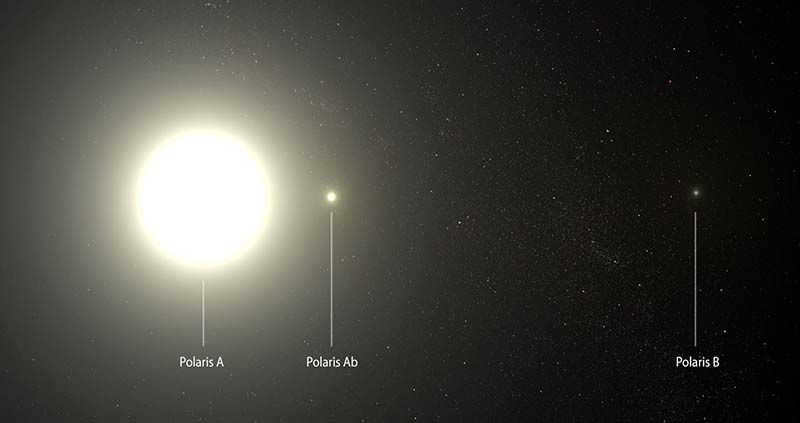
However, Polaris possesses an additional characteristic – it serves as a variable star belonging to the Cepheus delta classification, specifically a Cepheid. Moreover, it holds the distinction of being the nearest Cepheid to our location among all those presently identified. As a reminder, Cepheids represent pulsating stars that undergo strict periodic variations in brightness. Yet, Polaris stands as an extraordinary Cepheid due to its subdued pulsations. A century ago, its luminosity experienced significantly greater fluctuations compared to its present state, during which it has notably increased.
Yildun Represents the Delta of the Little Bear Constellation
Yildun is a relatively young star, with an estimated age of approximately 170 million years. It possesses a high surface temperature of 9900 K, classifying it as a white dwarf star. However, it is worth noting that Yildun has a radius 2.8 times larger than that of our Sun. In terms of proximity, Yildun is significantly closer to Earth than Polaris, being located at a distance of 172 light years.
Due to its rapid rotation, Yildun is expected to exhibit noticeable flattening around its poles. Over the course of around 700 million years, this star will undergo a transformation into a red giant, a fate that our own Sun will also experience, albeit much later. As Yildun approaches our planet, its luminosity will gradually increase, resulting in a brighter appearance in the night sky.
Urodelus represents the epsilon star in the constellation of the Little Dipper.
This particular celestial object is actually a binary star system. Located at the center of this system is an orange giant star, which is 19 times larger than our Sun and three times more massive. Despite its larger size, it has a similar temperature to the Sun due to its significantly larger surface area. Additionally, it emits 225 times more light than the Sun.
The second star within this system is not as extensively researched. However, it is known to be a white main-sequence star that completes an orbit around the orange giant star in just 39.5 days. This close proximity of the two stars results in periodic variations in the system’s brightness, as the smaller star occasionally obscures the larger one. As a result, Urodelus is classified as an Algol-type variable star.
Urodelus is located approximately 300 light years away from us, and its distance is gradually decreasing at a rate of 10.5 km per second as it moves closer to our position.
Alifa holds the position of the Little Dipper’s zeta star.
It is an ordinary hot white star with a temperature on its surface of approximately 9000 K. Alifa is six times bigger than the Sun and illuminates 191 times more light than our Sun. Alifa is located at a distance of 337 light years, therefore, it appears as a dim star in the Earth’s sky, with a brightness of only 4.2m.
Allaso is one of the stars in the constellation of Ursa Minor
This celestial object is also known by its other name, Anwar al Farkadin. In the night sky, it appears as an ordinary star with a magnitude of 4.95. Its distance from Earth is approximately 96 light years.
However, upon closer observation, it becomes apparent that Allaso is actually a binary star system. The primary star in this system is a white-yellow dwarf, which is nearly twice the size of our Sun, 1.66 times more massive, and slightly hotter. This is what we perceive when we look up at the sky.
The secondary component of this system, on the other hand, is not well understood. It is classified as a red dwarf and is located 13 light years away from the primary star. Although this is a considerable distance, gravitational interaction between the two stars is still possible.
Cohab is the beta version of the Little Dipper.
The second most luminous star in the constellation is a massive orange giant, 42 times the size of the Sun and 2.5 times its mass. Kohab emits 400 times more light than the Sun – if it were placed at the center of our solar system, its intense radiation would scorch everything in its path.
Kohab has a yellow-orange satellite with a brightness of 11.3, which can be observed at an angular distance of 3.4 seconds.
In 2014, scientists discovered an exoplanet in Kohab that is six times more massive than Jupiter. The planet’s maximum distance from the star is only 1.4 astronomical units, and it completes one orbit around the star in 522 days. Due to the star’s size and strength, this planet can be classified as a “hot Jupiter”.
Ferkad, the gamma star of the Little Dipper
This particular star, known as Ferkad, may not seem extraordinary at first glance. It is simply an average white giant, approximately 15 times larger than our own Sun and weighing about 8 times more. However, what sets Ferkad apart is its luminosity – it emits a staggering 1100 times more light than the Sun. As a result, despite its great distance from Earth (approximately 480 light years), Ferkad still appears quite bright in the night sky, with a magnitude of about +3m.
Another fascinating aspect of Ferkad is its variability. Classified as a Delta Shield variable star, Ferkad experiences fluctuations in its brightness, changing by approximately 0.05m over a period of 3.43 hours. These fluctuations are caused by pulsations on the surface of the star, adding to its allure and intrigue.
Galaxies in the constellation of Ursa Minor
The Ursa Minor constellation offers limited opportunities for amateur astronomers to observe celestial objects. Among the galaxies found in this constellation, there is only one known as the dwarf elliptical galaxy, commonly referred to as the Little Dipper.
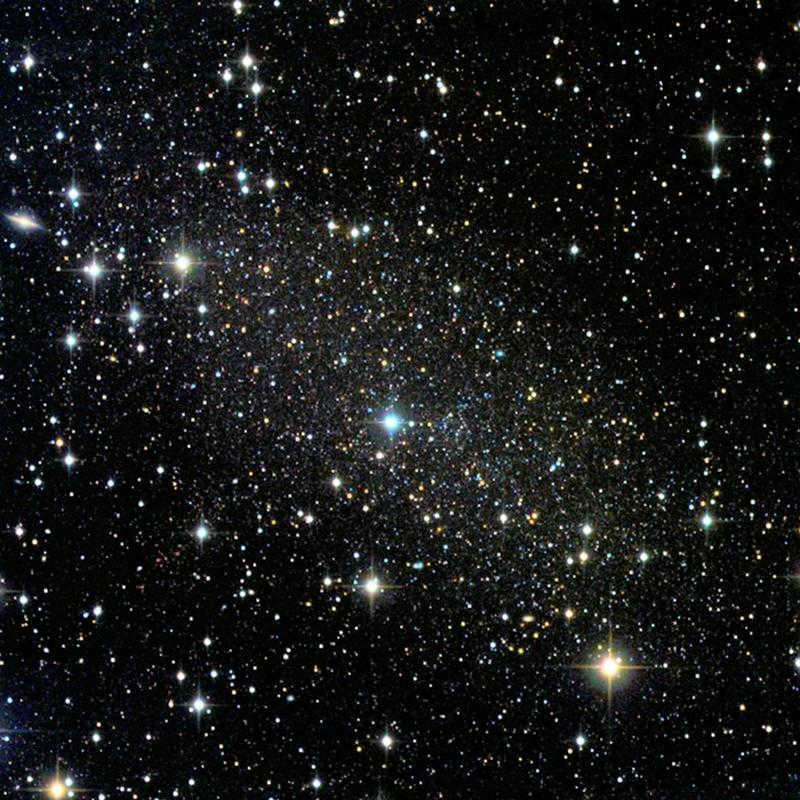
The galaxy known as The Little Bear Galaxy is the same as The Little Dipper galaxy.
This particular galaxy is composed of aging stars, as the process of star formation within it occurred approximately 14 billion years ago and continued for a span of 2 billion years. Subsequently, the appearance of new stars within this galaxy has been quite limited.
Similar to the Magellanic Clouds, The Little Bear Galaxy exists as a satellite of our own Milky Way galaxy.
Meteors Are Seen in the Ursa Minor Constellation
In the Ursa Minor constellation, there is a celestial event known as the Ursids meteor shower. This meteor shower occurs annually, starting on December 17 and lasting for approximately one week. The peak of the Ursids meteor shower is reached on December 22, during which observers can witness an average of 10 meteors per hour. However, there have been instances where the activity of the Ursids meteor shower has significantly increased. For instance, in 1945, the meteor shower reached an impressive rate of 120 meteors per hour.
